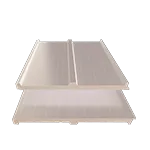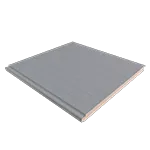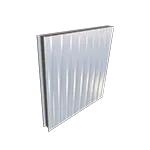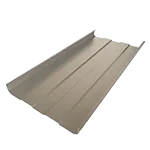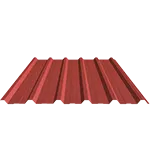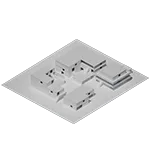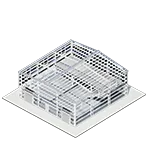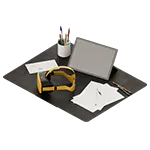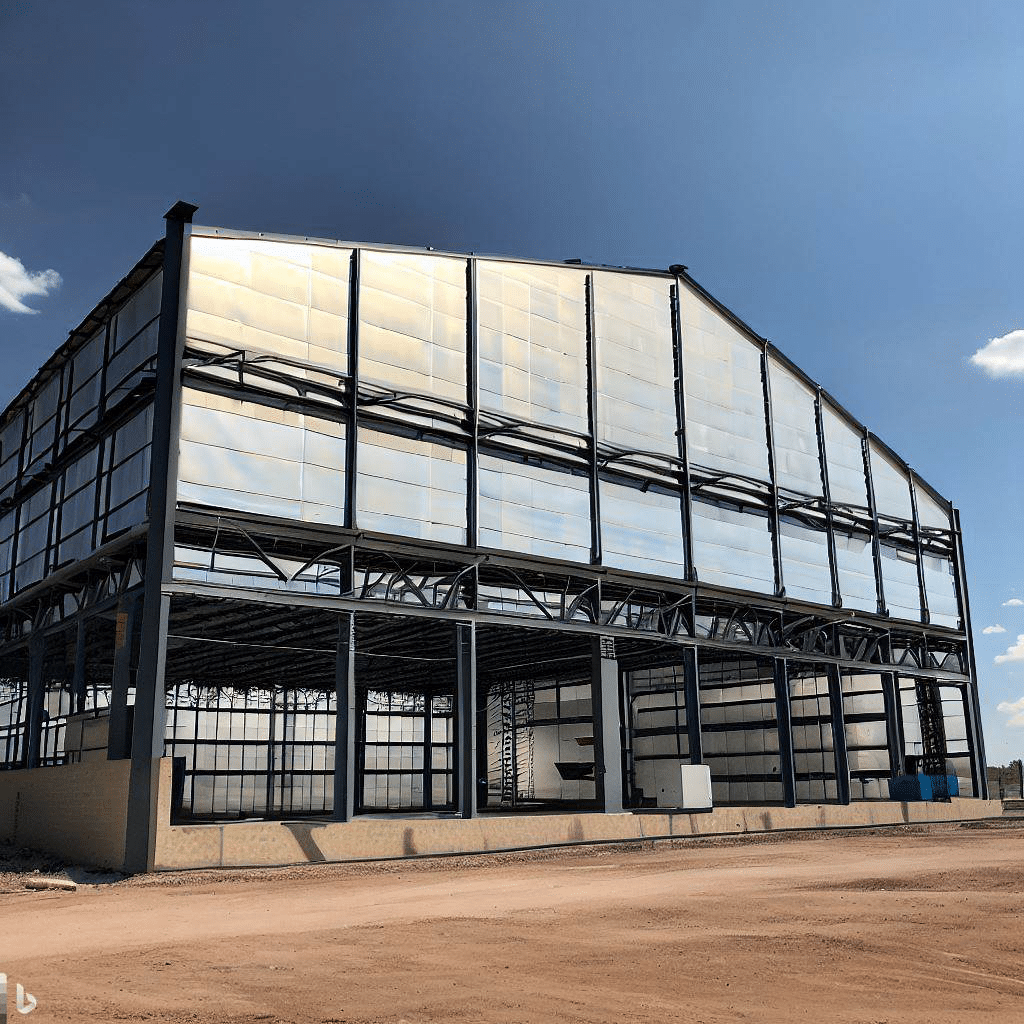Metal buildings are increasingly gaining popularity in the construction industry in areas where they were not as common as in the US or other industrialized countries. This is due to their durability, affordability, and versatility. They can be used for a wide range of purposes such as storage facilities, workshops, commercial spaces, and even residential homes. However, with their increasing use comes the issue of security. Are metal buildings secure enough to protect your business against burglars?
In this blog post, we will explore the components of metal buildings and cladding options available while answering the big question: Is it easy for a burglar to break into a metal building? So, let’s dive a little into the world of metal building security.
Components of metal buildings
Metal buildings are made up of several components that work together to create a sturdy and secure structure. The primary component is the steel frame (main structure), which serves as the backbone of the building. Steel frames, when designed correctly, are durable and resistant to harsh weather conditions such as high winds or heavy snow loads.
Another critical component in metal buildings is the roofing system. Metal roofs are designed to be low maintenance while providing long-lasting protection against leaks and other types of damage, especially if you use a standing seam roofing system or other that prevents water seepage.
In addition to steel framing and roofing systems, metal buildings also feature walls made from different types of cladding materials. These cladding options include steel sheets (metal panels), concrete masonry units (CMUs), insulated panels, and brick veneer systems among others.
Finally, yet importantly, doors on metal structures should be chosen with security in mind. Several door options are available for these kinds of constructions – roll-up doors or sliders are popular choices since they offer good resistance against forced entry attempts.
Every single part involved in constructing a metal building plays an essential role when it comes down to its overall safety level including overall strength & durability aspects that can make them either more prone or less prone towards break-ins.
What are the cladding options for metal buildings?
When it comes to constructing a metal building, the cladding options available are diverse. Cladding refers to the material used to cover and protect the exterior of a building. The primary function of cladding is to provide weather resistance while also enhancing the aesthetics of the structure.
One popular option for metal buildings is steel sheets, which offer excellent durability and strength. Steel panels can withstand harsh environmental conditions such as high winds, hailstorms, and heavy rain.
Other types of cladding options include insulated metal panels (IMP) that offer energy-efficient features, good acoustic performance, fire resistance, and additional rigidity against wind loads. Another advantage of steel sheets is that they can be painted with corrosion-resistant coatings.
The standing seam roofing system represents an excellent option for low-slope roofs and large industrial warehouses, as it can be efficiently rolled out on-site to cover vast roof or wall areas with ease. This capability is especially valuable for construction professionals seeking to optimize installation time and costs while delivering top-quality roofing solutions.
Finally, other choices for metal buildings are aluminum composite paneling (ACP), titanium panels, zinc panels, and vinyl siding.
Ultimately, when choosing the cladding materials for your metal building you should consider factors like durability, weather resistance, insulation values, and aesthetic appeal.
Do cladding materials for metal buildings have security weaknesses?
Cladding options for metal buildings can offer a wide range of benefits, such as improved insulation and aesthetics. However, it’s essential to consider how these materials may affect the security of your building.
Some cladding materials might have inherent weaknesses that burglars could exploit. For example, corrugated metal sheets are a popular option for their durability and affordability but can be vulnerable to forced entry with specialized tools. Similarly, although it’s not very common, there are some entry-level insulated panels brands that may not be able to withstand cutting tools or blunt force. Therefore, it’s critical to evaluate the quality of the materials used in constructing a metal building.
Additionally, installation plays a critical role in ensuring the security of your metal building’s cladding. Poorly installed panels or gaps between them could provide an easy entry point for burglars. Also, it is important that insulated metal panels have concealed screws, which is an additional security layer.
While most cladding materials offer excellent protection against natural elements like wind and rain from their very design, it’s vital to be clear that quality of materials and installation affects how easy is to break in metal buildings.
Metal buildings vs. concrete buildings in terms of security, which option is best?
When it comes to security, both metal and concrete buildings have their advantages. Metal buildings are typically made with steel frames that offer exceptional strength and durability, making them resistant to natural disasters such as hurricanes and earthquakes.
In terms of break-ins, any type of building can be vulnerable if proper security measures are not put in place. While metal buildings may seem easier for burglars to penetrate, wood or concrete structures can also be breached through their weak points (such as doors or windows).
Despite the above, cutting steel sheets would require a high-powered electric cutter, which is actually a disadvantage for intruders, as not only must they know how to operate the tool, but the resulting noise and sparks would alert anyone in the vicinity of the building. As you can see, it might be much easier for them to forge the door lock or make a copy of the key.
One point in favor of single steel trapezoidal sheets and insulated metal panels used in steel buildings is that when hit (assuming they are hit hard enough), they bend, in contrast to brick, which cracks. In other words, making a hole to get in is not an option.
Ultimately, when deciding between a metal or concrete building in terms of security, it’s important to consider your specific needs and take steps such as installing sturdy locks and alarm systems regardless of the building material chosen.
Security recommendations
There are various ways in which the security of metal buildings can be enhanced to diminish potential break-ins. Firstly, installing high-quality locks on all entry points such as doors and windows is essential.
Secondly, adding motion-sensor lighting around the building’s perimeter can help deter thieves by exposing them while attempting to gain access. Additionally, implementing an alarm system that alerts authorities immediately in case of a breach is highly recommended.
Finally, conducting routine inspections and maintenance on the building’s structure ensures that any weak spots or vulnerabilities are identified before they become targets for thieves.
By taking these proactive measures into account, metal building owners can rest assured that their property remains secure against possible theft attempts.
Conclusion
After reviewing the components of metal buildings, the cladding options available and comparing them to concrete buildings in terms of security, it is evident that metal buildings are a safe and secure option.
While some may argue that certain cladding materials have security weaknesses, proper installation and maintenance can greatly reduce those risks. Additionally, metal buildings offer flexibility in design and customization while maintaining structural strength.
Ultimately, when considering building security, it is important to also consider factors such as location, access points, and surveillance systems. However, with proper planning and implementation of security measures alongside the use of a sturdy metal building structure with appropriate cladding materials installed correctly by professionals; there should be no reason why your asset cannot be fully protected.
When constructing or upgrading structures for commercial or personal use always consider a well-built steel structure as an alternative solution instead of traditional brick-and-mortar constructions. As we have explained in other blog posts, the benefits are numerous!
